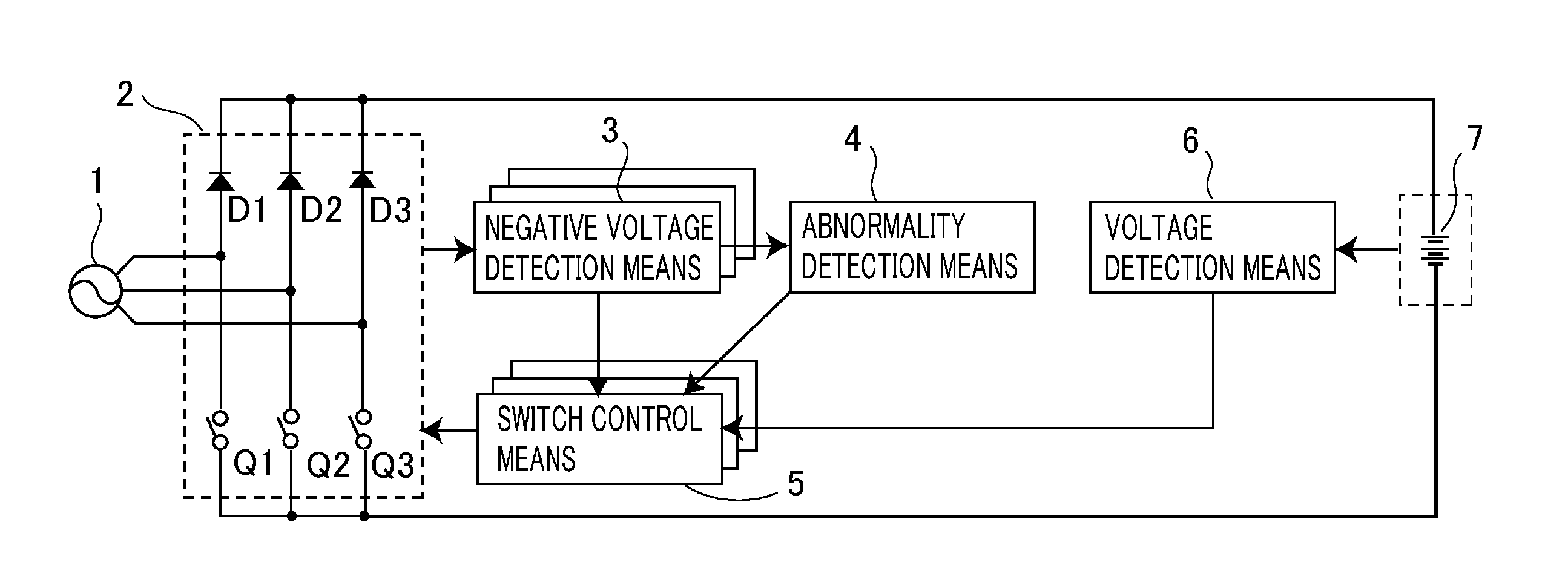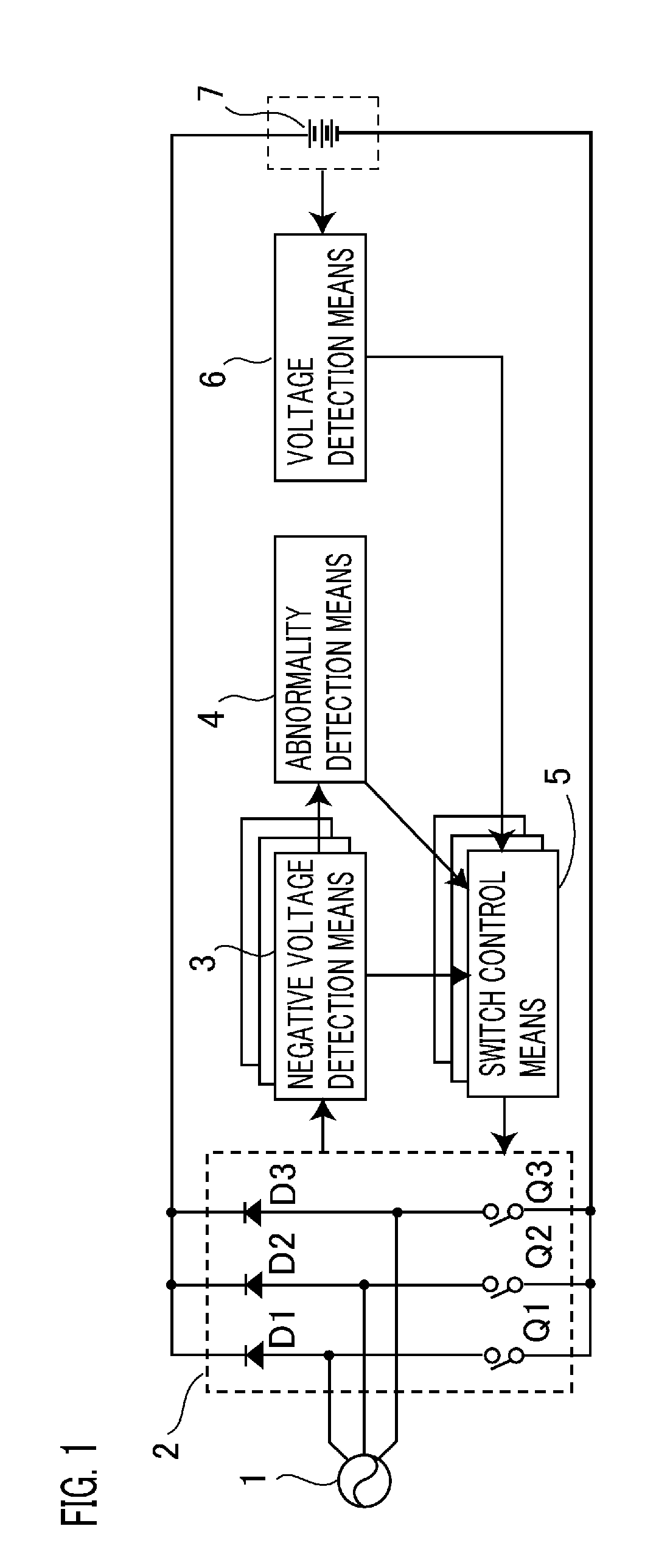Power supply device
a power supply device and power supply technology, applied in the direction of circuit monitoring/indication, generator circuit arrangement control, transportation and packaging, etc., can solve the problems of inability sometimes unable to charge up, and sometimes unable to detect a negative voltage, etc., to achieve efficient charging up
- Summary
- Abstract
- Description
- Claims
- Application Information
AI Technical Summary
Benefits of technology
Problems solved by technology
Method used
Image
Examples
embodiment 1
[0025]FIG. 1 is a block diagram showing the configuration of a power supply device according to Embodiment 1 of the present invention; FIG. 2 is a circuit diagram showing a specific configuration thereof.
[0026]A power supply device according to Embodiment 1 of the present invention includes a rectification means 2 for synchronously rectifying three-phase AC voltages generated by a generator 1 so as to produce a charging voltage for charging up a battery 7; a switch control means 5 for controlling each of semiconductor switches Q1 to Q3, constituting the rectification means 2, at intervals in response to the charging status of the battery 7; a negative voltage detection means 3 for detecting a negative voltage at each phase of the three-phase AC voltages; and a voltage detection means 6 for detecting the battery voltage being higher than a predetermined voltage, wherein the switch control means 5 controls each of the semiconductor switches Q1 to Q3 when the negative voltage or the ba...
embodiment 2
[0043]In Embodiment 2 of the present invention, another abnormality detection method is implemented in the power supply device shown in FIG. 1 according to Embodiment of the invention, in which sequence of detecting negative voltages at the three phases is monitored, and when an abnormality in the sequence of detecting the negative voltages is detected, the phase corresponding to the abnormality is determined to be in an abnormal state.
[0044]FIG. 4 to FIG. 7 show flowcharts for the negative voltage detection means 3, the abnormality detection means 4, the voltage detection means 6 and the switch control means 5 in FIG. 1, respectively.
[0045]As shown in FIG. 4, the negative voltage detection means 3 determines phase by phase whether or not each voltage from the generator 1 is lower than zero, and if so, then turns on the switch corresponding to the phase, whereas if not lower than zero, turns off the switch (Steps S31 to S40).
[0046]Moreover, the abnormality detection means 4, as show...
embodiment 3
[0051]In Embodiment 3 of the present invention, still another abnormality detection method is implemented in the power supply device shown in FIG. 1 according to Embodiment 1 of the invention, in which if a negative voltage fails to be detected at each of the three phases at a predetermined time, the phase corresponding to the failure is determined to be in an abnormal state, and controlling of the semiconductor switch corresponding to the phase is continued until a negative voltage is detected.
[0052]The operation of the abnormality detection means 4 will be explained referring to the flowchart in FIG. 8.
[0053]The abnormality detection means 4 detects a rising edge of an output voltage from each phase of the negative voltage detection means 3 (Steps S70 and S71). If a rising edge is detected, its counter is reset and then a predetermined value is preset in the counter (Step S74). When presetting the predetermined value in the counter, the value can be adjusted in accordance with the...
PUM
 Login to View More
Login to View More Abstract
Description
Claims
Application Information
 Login to View More
Login to View More - R&D
- Intellectual Property
- Life Sciences
- Materials
- Tech Scout
- Unparalleled Data Quality
- Higher Quality Content
- 60% Fewer Hallucinations
Browse by: Latest US Patents, China's latest patents, Technical Efficacy Thesaurus, Application Domain, Technology Topic, Popular Technical Reports.
© 2025 PatSnap. All rights reserved.Legal|Privacy policy|Modern Slavery Act Transparency Statement|Sitemap|About US| Contact US: help@patsnap.com



